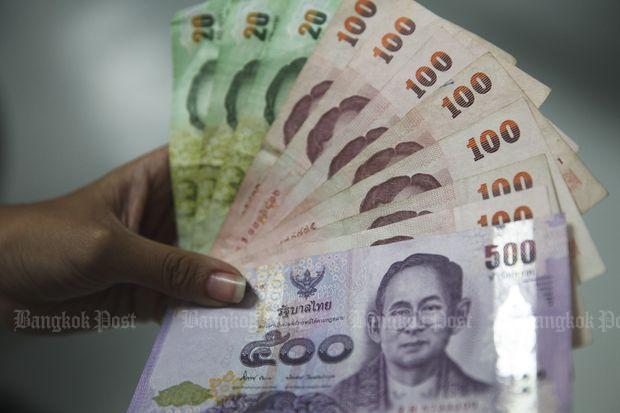Poll: Asian currencies to stay steady
BENGALURU, India: Asian currencies, on an upswing since the start of the year, are unlikely to trade higher than they are now in a year, held back as the US Federal Reserve presses on with further interest rate rises, a Reuters poll found.
Having made inroads thanks to growing doubts over US President Donald Trump’s ability to pass sweeping tax cuts, the regional currencies are forecast to broadly hold their ground, the poll of more than 50 foreign exchange strategists showed.
The baht — among the best performers in Asia — has gained nearly 7% against the dollar while the Chinese yuan, Indian rupee, Korean won, Malaysian ringgit, Singapore dollar and Taiwan dollar have all appreciated over 4%.
In contrast, the dollar index, which measures the greenback against a basket of six currencies, has lost about 8% so far this year.
It rose over 1% after the Fed announced it would start to shrink its more than $4-trillion bond portfolio this month and hinted a December hike was on the cards.
The average of the survey results of 11 major Asian currencies predicted almost no change over the next 12 months from current levels.
Strategists at UniCredit expect emerging market currencies to do well over the medium-term but say they are cautious.
A separate Reuters poll published this week showed East Asia’s stock market bull run is expected to extend into 2018, driven by optimism about economic growth and better company earnings.
China’s yuan is forecast to hover around current levels of 6.64 per dollar in six months and depreciate slightly to 6.70 in a year, the poll showed.
The People’s Bank of China (PBoC) allowed the yuan mid-point reference rate to depreciate about 2% over the past two weeks.
“Part of it is a recent slight bounce in the USD, and much of it is the PBoC — yet again! — ensuring that what had been appreciation pressure from end-May to that early September low did not run too far ahead of where the central bank wants the currency to be,” said Rabobank senior Asia-Pacific strategist Michael Every.
Financial risks associated with a debt boom in the world’s second-largest economy prompted Standard & Poor’s to downgrade its long-term sovereign credit rating last month, which dragged down the yuan about a percent against the dollar.
Broad policy considerations will be key for the yuan’s outlook.
Political and economic policies will be front and centre at the once-every-five-years China Communist Party meeting, starting from Oct 18, at which President Xi Jinping will look to further stamp his authority on the party.
India’s rupee is forecast to appreciate marginally to 64.95 per dollar in six months and 65.00 in a year, compared with Wednesday’s close of 65.02. But markets have turned bearish on the rupee for the first time in nearly nine months, suggesting the optimism surrounding sweeping economic reforms is fading.
“The current combination of external risks from developed market policy normalisation, local negatives from fiscal and current account deficits and slower growth keep us on the sidelines with respect to [the] INR [Indian rupee],” wrote Craig Chan, research analyst at Nomura, in a note.
Economic growth slowed to a three-year low of 5.7% in the April-June quarter, prompting the Reserve Bank of India to lower its growth projection to 6.7% for fiscal year 2017-18, down from previous forecast of 7.3%. It kept policy steady at the October meeting, after cutting its main rate in August to the lowest since November 2010.
Source: https://www.bangkokpost.com/business/finance/1337867/poll-asian-currencies-to-stay-steady


 English
English




